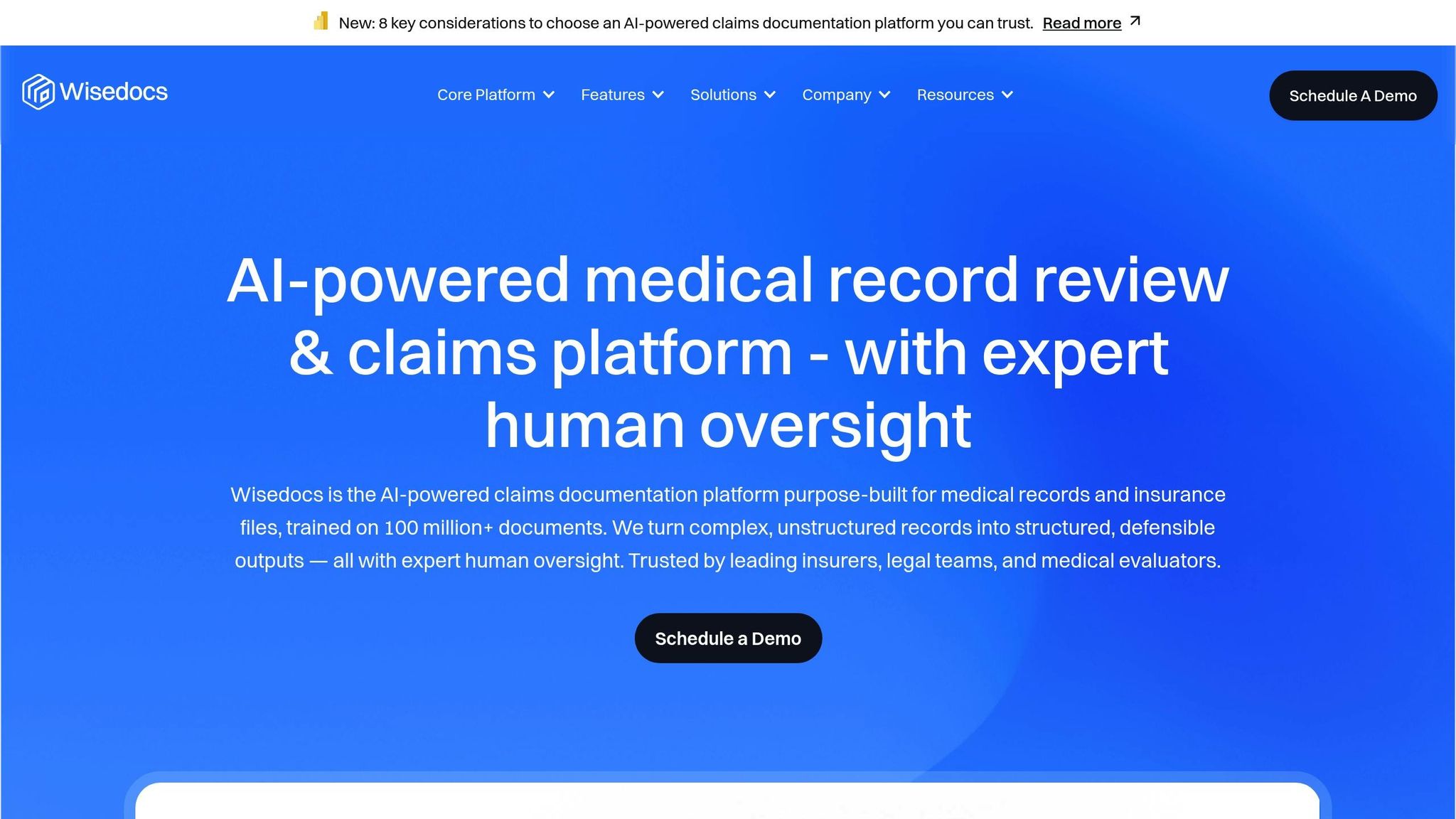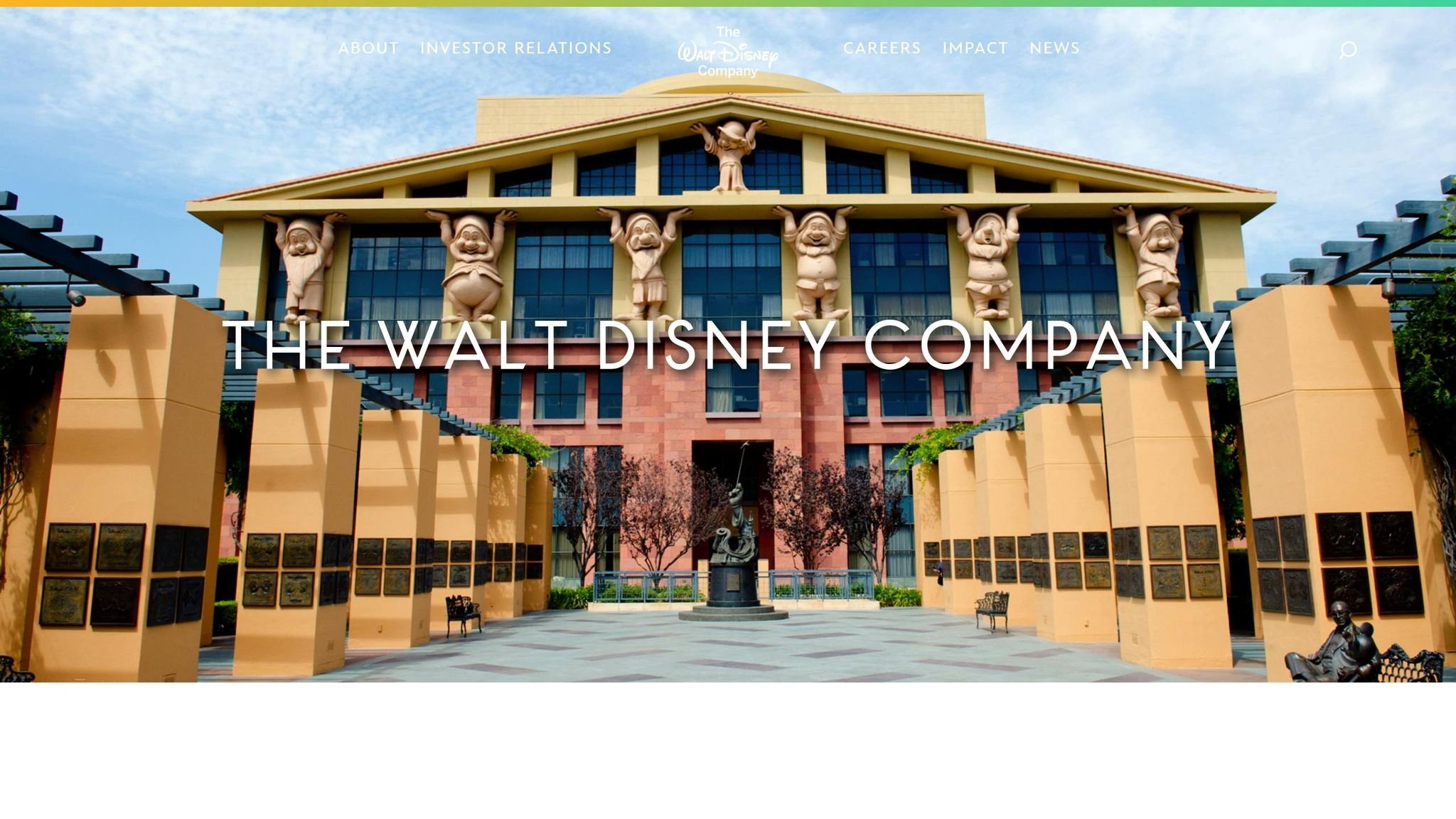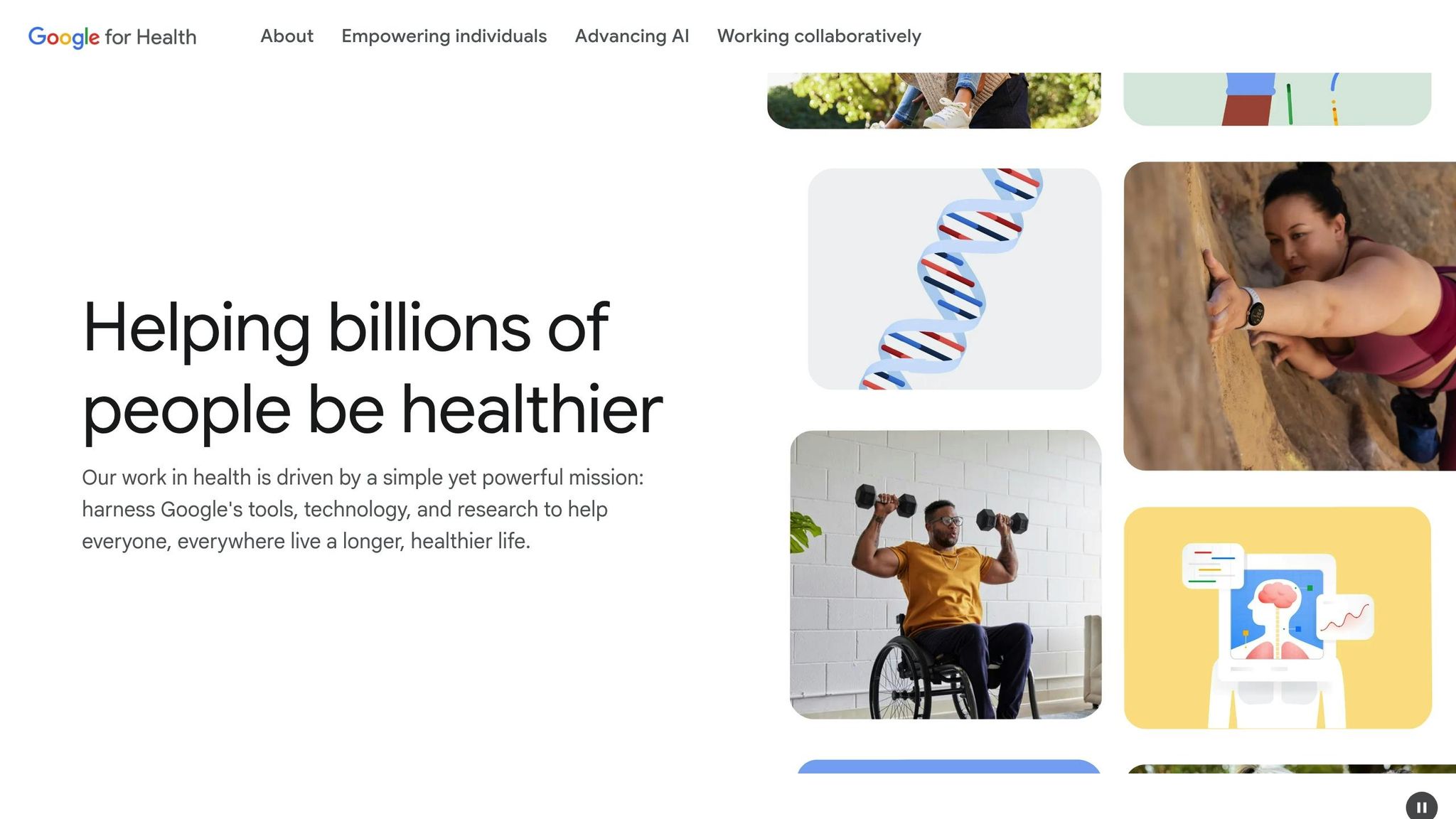Case Studies: AI in Cross-Functional Training
Explore how AI transforms cross-functional training, enhancing collaboration and learning through tailored experiences and innovative tools.

AI is reshaping how teams from different departments learn to work together. Instead of generic training, AI tools provide customized learning experiences tailored to individual skills and team dynamics. This approach helps break down communication barriers and ensures smoother collaboration. Key highlights include:
- AI-Powered Simulations: Teams practice decision-making in realistic scenarios, with real-time feedback to improve collaboration.
- Adaptive Learning Platforms: Training content is personalized for each team member, focusing on their skills and learning style.
- Collaborative AI Tools: These tools simplify complex jargon, merge diverse ideas into actionable plans, and optimize team interactions.
Real-world examples show how companies like Bank of America, Disney, and Google Health are successfully using AI to improve cross-functional collaboration. For instance, Disney used AI to bridge gaps between creative and analytical teams, while Google Health streamlined communication between engineers and medical professionals.
Structuring a modern AI team - Denys Linkov, Wisedocs

AI-Driven Training Methods for Cross-Functional Teams
AI is reshaping how cross-functional teams are trained, offering dynamic and responsive learning environments. By analyzing learning data, AI tailors training experiences to meet the needs of both the team as a whole and individual members, creating a more impactful and engaging process.
AI-Powered Simulations and Scenario-Based Learning
AI-driven simulations immerse teams in realistic scenarios, helping them practice decision-making in situations that mirror real workplace challenges. These simulations adapt in complexity based on team performance, ensuring the training remains both engaging and attainable.
At the heart of these simulations is realistic decision-making practice. Teams are placed in scenarios that require input from multiple disciplines, encouraging effective communication and fostering an understanding of each other's roles. The AI adjusts variables and difficulty levels dynamically, ensuring the experience stays relevant and challenging.
Immediate feedback mechanisms are another key feature. AI tracks team interactions and provides instant, targeted feedback, helping teams quickly identify and address weaknesses in their collaboration. This real-time insight ensures that issues are resolved before they impact actual projects.
With scalable scenario generation, organizations can create a virtually endless array of training situations. The AI tailors these scenarios to specific industries and team compositions, making the training highly relevant and practical.
Adaptive Learning Platforms
AI-powered adaptive learning platforms take personalization to the next level, customizing training content for each team member while keeping the focus on cross-functional collaboration. These platforms analyze individual learning styles, skill gaps, and collaboration habits to craft tailored learning paths that benefit both the individual and the team.
Personalized content delivery ensures that each team member receives training in a format that suits their learning style. For example, visual learners might receive diagrams and infographics, while auditory learners get audio-based content. This tailored approach boosts engagement and retention across the team.
Through dynamic skill gap analysis, the platform continuously evaluates where each member stands in terms of both technical and collaborative abilities. It identifies gaps that could hinder team performance and adjusts the training to address these areas.
Progress tracking and optimization ensures that the learning process evolves over time. The AI monitors how well team members absorb concepts and apply them collaboratively, refining future training sessions for better results.
Meanwhile, team-level insights give managers a clear view of how their teams are developing. These insights can highlight which team combinations work best and suggest optimal groupings for future projects, based on complementary skills and communication styles.
Collaborative AI Tools for Communication and Innovation
AI tools designed for cross-functional teams focus on improving communication and fostering creativity. By breaking down barriers between disciplines, these tools encourage knowledge sharing and help teams work together more effectively.
Intelligent translation plays a crucial role in bridging gaps between specialized terminologies. It ensures that everyone on the team, regardless of their expertise, can follow discussions and contribute meaningfully.
Automated synthesis takes diverse perspectives and merges them into actionable plans. For instance, when professionals from marketing, engineering, and finance collaborate, the AI identifies shared themes, resolves conflicts, and highlights synergy opportunities, streamlining the path from brainstorming to decision-making.
Through pattern recognition, AI examines successful cross-functional projects to uncover strategies that foster innovation. It can suggest effective collaboration techniques, meeting formats, and decision-making processes tailored to similar teams and project goals.
Real-time collaboration optimization enhances meetings and group sessions by monitoring interactions and offering suggestions to improve communication flow. Whether it’s recommending smaller breakout groups or highlighting when to bring in specific expertise, the AI ensures that all voices are heard and the team stays focused.
These AI-driven approaches combine to create a robust training ecosystem that equips cross-functional teams to handle complex challenges in today’s fast-paced business world. By adapting to team performance and organizational needs, these methods ensure that training remains relevant, effective, and forward-thinking, setting the stage for the real-world examples that follow.
Case Studies: Real Examples of AI in Cross-Functional Training
Here’s a look at how some organizations have successfully used AI to tackle cross-functional challenges.
Case Study 1: Bank of America's AI Simulations for Leadership Training

Bank of America wanted to improve its leadership training programs, particularly for cross-departmental decision-making. Traditional methods didn’t fully reflect the fast-paced, multi-stakeholder environment of banking.
To address this, the bank introduced AI-driven simulations that covered areas like risk management, customer relations, compliance, and technology. These simulations required leaders to juggle competing priorities, navigate regulatory constraints, and coordinate across departments. The system also analyzed participants’ decision-making and communication styles, adjusting the complexity of scenarios in real time. This data was then used to refine and enhance training modules, making them more effective.
This innovative approach demonstrated how AI can bring creativity and technical expertise together in training environments.
Case Study 2: Disney's AI Collaboration for Creative and Analytical Teams

Disney faced a common challenge: bridging the gap between creative teams and those focused on data and strategy. Creative professionals often found data insights overwhelming, while analysts struggled to translate their findings into actionable ideas for creatives.
To solve this, Disney implemented AI-powered collaboration tools designed to bridge these differences. The tools analyzed communication patterns and project results, recommending better collaboration methods. They also translated complex data into visual insights for creatives while providing detailed feedback for analysts. These tools even facilitated brainstorming sessions, making project workflows smoother and improving overall content outcomes.
Disney’s success highlighted AI’s potential to bring creative and analytical teams together in a way that benefits both sides.
Case Study 3: Google Health's AI-Enabled Multidisciplinary Collaboration

Google Health faced a unique challenge: fostering collaboration among software engineers, medical professionals, regulatory experts, and user experience designers. Communication gaps between these fields often slowed progress in developing healthcare diagnostic tools.
To tackle this, Google Health introduced an AI-powered knowledge platform that synthesized information from technical documents, medical research, and regulatory guidelines. The platform translated technical jargon into medical terms (and vice versa), enabling real-time, informed discussions during team meetings. AI also supported scenario modeling, allowing teams to evaluate solutions from multiple perspectives, which significantly improved collaboration and sped up the development process.
These examples show how AI can help unify diverse teams, break down communication barriers, and deliver tangible results across industries.
Solving Challenges in Cross-Functional AI Training
AI training programs have the potential to deliver impressive results, but they aren't without hurdles. Missteps in addressing these challenges can stall progress, while the right strategies can ensure success. Let’s explore the common obstacles and how AI solutions can help.
Common Challenges: Resistance to Change and Communication Gaps
One of the biggest roadblocks to implementing AI in training is employee resistance. Many professionals worry that AI might render their roles obsolete or undervalue their established skills. This concern is particularly pronounced among seasoned employees accustomed to traditional methods. In cross-functional teams, the issue can be even more complex, as comfort levels with technology often vary widely.
Another major challenge is communication breakdowns between departments. While technical teams might readily embrace AI tools, nontechnical departments often struggle to see their relevance. This disconnect can lead to uneven adoption and fragmented learning experiences across the organization.
Other obstacles include misaligned training strategies, isolated data systems that prevent knowledge sharing, and budget constraints tied to unclear return on investment (ROI).
Tackling these issues requires thoughtful, AI-driven solutions.
AI Solutions: Data-Driven Alignment and Workflow Automation
Integrating AI tools into everyday workflows can help reduce resistance to change. By embedding training materials into systems employees already use, organizations can make the transition feel seamless and less disruptive.
To address communication gaps, customized training content tailored to each department’s needs can make a big difference. AI can analyze learning patterns, job roles, and team objectives to create personalized experiences while maintaining consistent core principles.
AI-powered real-time collaboration tools are another game-changer. These tools can simplify technical jargon, offer instant feedback, and provide suggestions that improve understanding between departments. This fosters better cross-departmental collaboration.
Predictive analytics can also play a pivotal role. By examining performance data and communication patterns, AI can identify training gaps early and recommend targeted interventions. This ensures that training programs stay aligned with evolving business goals.
Finally, centralized knowledge platforms can break down data silos. These platforms unify information from various sources, making it accessible to all departments. For instance, NAITIVE AI Consulting Agency specializes in creating these unified learning environments, ensuring that knowledge flows freely across the organization.
Comparison Table: Challenges vs. AI Solutions
| Challenge | AI Solution | Implementation Approach |
|---|---|---|
| Employee resistance to new technology | Automated workflow integration | Embed AI tools into systems employees already use |
| Communication gaps between departments | Real-time collaboration tools | Use AI to facilitate clear, cross-departmental dialogue |
| Training misalignment with team needs | Personalized learning paths | Tailor content to specific roles and objectives |
| Data silos hindering knowledge sharing | Centralized knowledge platforms | Combine information from various sources into one hub |
| Unclear ROI and budget concerns | Predictive analytics | Measure training effectiveness and forecast outcomes |
| Inconsistent adoption across teams | Department-specific interfaces | Create user experiences tailored to each team’s needs |
This table highlights how AI can directly address challenges, ensuring smoother implementation and better outcomes.
Organizations that succeed in integrating AI often start small, launching pilot programs in departments that are open to change. Gradual expansion, paired with strong change management practices, can ease the transition and build momentum.
NAITIVE AI Consulting Agency emphasizes aligning AI innovation with an organization’s culture. They understand that technology alone isn’t enough - fostering a culture of continuous learning and collaboration is essential. When organizations prioritize development and adaptability, AI tools can truly shine, making training more engaging and impactful.
Key Takeaways and Best Practices for AI-Driven Training
When it comes to successfully implementing AI-driven training, a few strategies stand out. Insights from case studies highlight approaches that not only reduce risks but also maximize the benefits of AI in cross-functional training. These methods provide a clear framework for crafting effective AI training programs.
Start Small and Scale Strategically
Launching AI-driven training with a pilot program is a smart first step. For instance, Bank of America began by introducing AI simulations to select leadership groups instead of rolling them out company-wide. This approach allowed them to test the technology, gather valuable feedback, and refine their methods before scaling up. Starting small minimizes costs, uncovers potential challenges early, and helps create internal advocates who can champion the initiative.
Choosing the right starting point is just as important. Focus on departments that are both tech-savvy and have well-defined training needs. Teams like marketing professionals who work with data analytics often adapt quickly to new tools, delivering early wins that can inspire broader organizational participation.
From the outset, establish systems to measure progress. Track engagement, skill improvements, and business outcomes. For example, Disney’s creative teams saw faster project completion times once they had baseline metrics in place. Scaling should be done in phases, guided by factors such as readiness, budget, and expected business impact.
Build a Culture of Continuous Learning
After a successful pilot, the next challenge is fostering an environment where continuous learning thrives. Leadership plays a critical role here. At Google Health, for example, leadership involvement underscored the importance of ongoing AI training, encouraging employees to embrace new skills.
Creating a safe and supportive space for learning is key. Employees may hesitate to admit knowledge gaps, fearing it might make them seem outdated. Organizations that celebrate learning milestones and emphasize that every expert starts as a beginner help alleviate these concerns.
Cross-departmental mentoring can also accelerate adoption. Pairing tech-savvy employees with colleagues from other departments breaks down silos and helps non-technical teams see how AI can be applied in their roles. These mentoring relationships often evolve into long-term collaborations, strengthening team dynamics.
To make AI training an integral part of professional development, weave it into existing programs. This can include periodic assessments of AI skills, ongoing access to learning resources, and aligning AI competency with performance reviews and career growth opportunities.
NAITIVE's Approach to Outcome-Driven Solutions
NAITIVE offers a results-focused approach to AI training, tailoring solutions to align with specific business goals. Their team combines technical expertise with practical business insights to ensure that training delivers measurable results, not just technology adoption.
What sets NAITIVE apart is their emphasis on building advanced AI systems rather than simple tools like chatbots. This deeper technical foundation equips employees to handle complex, multi-step processes independently, preparing them for seamless AI integration into their workflows.
A cornerstone of their method is setting clear, measurable outcomes from the start. Instead of vague promises, they define specific goals - such as faster project completion, improved cross-departmental communication, or targeted skill development. This ensures accountability and delivers tangible business value.
Drawing on extensive experience in advanced AI systems, NAITIVE focuses on preparing teams for the future of work. Their training goes beyond teaching how to use tools; it emphasizes collaboration with AI systems to enhance human capabilities. These practices create a solid foundation for a forward-thinking, cross-functional training program that’s built to last.
FAQs
How can AI simulations improve decision-making and teamwork in cross-functional teams?
AI-powered simulations are transforming how teams tackle challenges by offering realistic scenarios where cross-functional groups can practice solving complex problems. These simulations help tear down barriers between departments, encourage collaboration, and sharpen communication skills among team members.
With AI analyzing data and delivering actionable insights, teams are better equipped to make informed and strategic decisions. This method drives creativity while also simplifying workflows, ensuring smoother operations and stronger alignment across different functions.
How can organizations address employee resistance to AI-based training programs?
Organizations looking to overcome resistance to AI-based training should focus on clear communication. It's essential to explain how AI tools can improve workflows and directly benefit employees. Engaging employees early on, outlining AI's role, and addressing their concerns can build trust and encourage openness.
Starting with small pilot programs is a smart way to showcase success and build confidence. Offering plenty of support - like training sessions, helpful resources, and a collaborative atmosphere - can make employees feel more at ease with these tools. Maintaining transparency and fostering ongoing conversations are crucial for a smooth transition and greater acceptance of AI in the workplace.
How does AI-powered adaptive learning customize training for cross-functional teams?
Adaptive learning driven by AI takes employee training to a whole new level by personalizing the experience. It evaluates each team member’s performance, preferences, and progress, then adjusts the content, feedback, and learning path in real-time. The result? Training that feels relevant and fits the unique needs of each individual.
This method doesn’t just save time - it focuses on the areas where employees need the most support, helping them learn new skills more efficiently. By tailoring the process, adaptive learning also strengthens teamwork, ensuring every employee is equipped to collaborate effectively in diverse, cross-functional settings.




